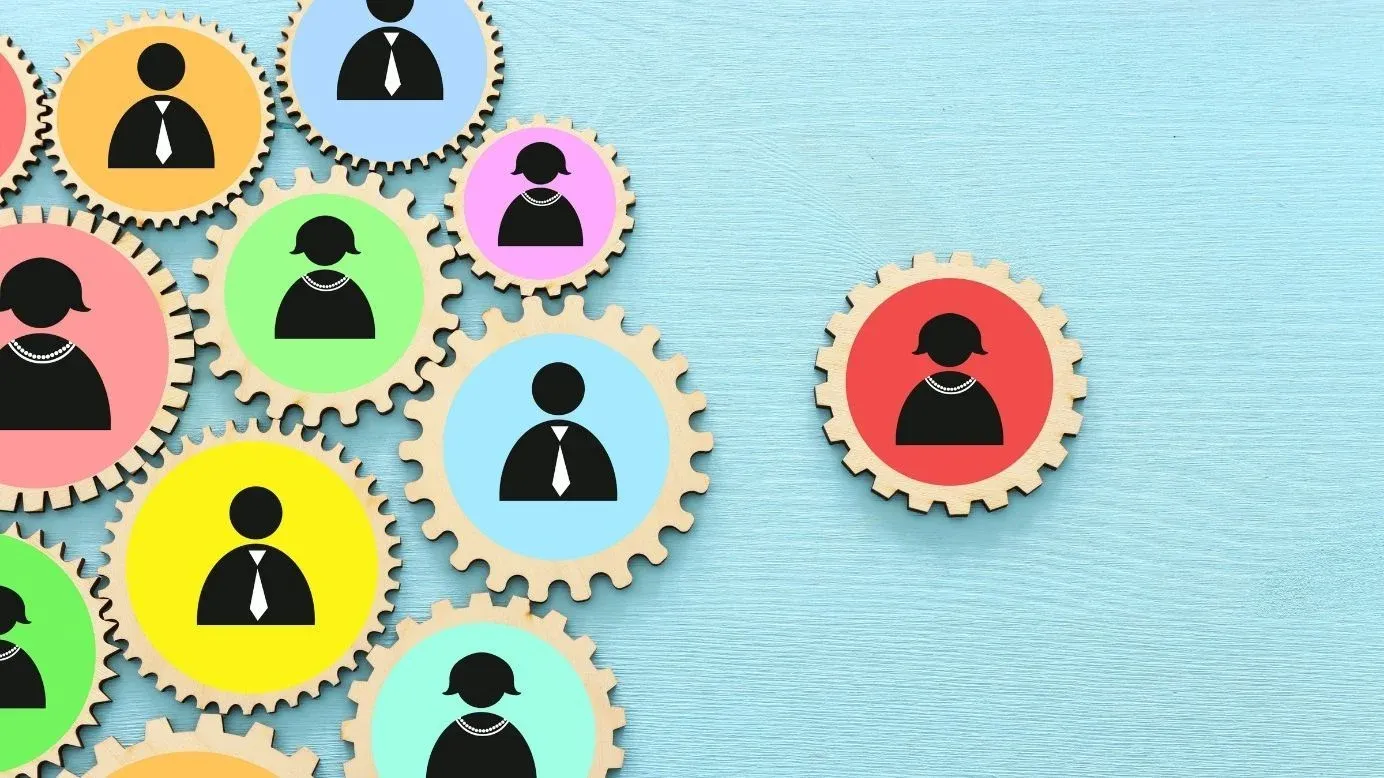
50 Hadiah Hari Penghargaan Pekerja yang Bijaksana
Temui 50 hadiah penghargaan pekerja yang unik dan bertimbang rasa untuk meraikan pasukan anda. Daripada kenang-kenangan yang diperibadikan kepada barangan praktikal, tunjukkan kesyukuran dengan penuh bermakna.

20 Permainan Seronok Hari Penghargaan Pekerja untuk Meningkatkan Semangat
Temui 20 permainan dan petua hari penghargaan pekerja yang menarik untuk meningkatkan semangat berpasukan, memupuk kerjasama dan menjadikan Hari Penghargaan Pekerja tidak dapat dilupakan.

50 Mesej Terima Kasih Kepada Rakan Sekerja Atas Hadiah Perpisahan
50 Ucapan terima kasih kepada rakan sekerja untuk hadiah perpisahan untuk menyatakan rasa terima kasih yang tulus. Hargai keprihatinan dan kemurahan hati mereka untuk hadiah istimewa itu.

35 Employee Appreciation Day Event And Party Themes to Consider In 2025
Temui 35 tema penghargaan pekerja yang memberi inspirasi untuk 2025, daripada acara yang menyeronokkan kepada gerak isyarat yang bernas, untuk meraikan pasukan anda dan meningkatkan semangat di tempat kerja.

10+ Creative Years of Service Award Ideas for Every Milestone
Explore unique years of service award ideas to celebrate milestones like 1, 5, 10, and 20 years. Boost loyalty, morale, and engagement with personalized awards.

50 Creative Employee Incentive Ideas to Run in 2025 to Boost Engagement
Discover 50 innovative employee incentive programs to boost morale, improve productivity, and foster a positive workplace culture.

5 Strategi Berkesan Dipelajari Daripada 4 Syarikat DEI Terbaik
Terokai kepentingan syarikat DEI dalam meningkatkan budaya tempat kerja. Ketahui strategi untuk melaksanakan inisiatif kepelbagaian, ekuiti dan rangkuman.

12 Idea Pengiktirafan Anugerah Untuk Meningkatkan Penglibatan & Kesetiaan Pekerja
Terokai pengiktirafan anugerah untuk meningkatkan penglibatan pekerja. Temui contoh dan laksanakan program yang mendorong motivasi dan produktiviti dalam organisasi anda.

30 Hadiah Penghargaan Pekerja Unik untuk Merasa Dihargai dan Diiktiraf
Tunjukkan penghargaan anda kepada hadiah penghargaan pekerja anda. Temui cara kreatif dan bermakna untuk mengiktiraf dan menghargai kerja keras dan dedikasi pasukan anda.

Bagaimana Program Kesetiaan Berkesan untuk Pekerja Dapat Mentransformasikan Organisasi Anda
Temui program kesetiaan yang berkesan untuk pekerja yang meningkatkan pengekalan, meningkatkan semangat dan memupuk budaya tempat kerja yang positif. Teroka jenis, faedah dan strategi pelaksanaan.

10 Idea Berkesan untuk Lencana Pengiktirafan Pekerja untuk Meningkatkan Penglibatan
Temui kuasa lencana pengiktirafan pekerja dalam meningkatkan budaya tempat kerja. Terokai jenis, faedah dan program yang berjaya yang meraikan pencapaian dan meningkatkan semangat, penglibatan dan pengekalan.

Panduan Menjalankan Tinjauan Kembali ke Pejabat untuk Pengumpulan Maklum Balas Pekerja yang Berkesan
Temui cara untuk menjalankan tinjauan kembali ke pejabat dengan berkesan untuk mengukur sentimen dan pilihan pekerja. Ketahui amalan terbaik, soalan utama untuk ditanya dan bagaimana platform suka Empuls boleh mengubah maklum balas menjadi cerapan yang boleh diambil tindakan, memastikan peralihan yang lancar kembali ke tempat kerja.

Tinjauan Sentimen Pekerja: Panduan untuk Memahami Keperluan Pasukan Anda
Temui cara tinjauan sentimen pekerja boleh meningkatkan penglibatan dan produktiviti dengan mengumpulkan cerapan tentang semangat dan kepuasan di tempat kerja pasukan anda.

Program Kad Hadiah Pekerja: Kunci untuk Menglibatkan dan Memberi Ganjaran kepada Tenaga Kerja Anda
Ketahui cara Program Kad Hadiah Pekerja meningkatkan semangat, menawarkan ganjaran yang diperibadikan dan meningkatkan budaya tempat kerja dengan pelaksanaan yang mudah. Ketahui tentang jenis, faedah dan amalan terbaik.

10 Idea Pekerja Kreatif Minggu Ini Yang Memberi Impak Sebenar
Temui idea Pekerja Minggu yang kreatif dan menarik untuk meningkatkan semangat dan motivasi dalam pasukan anda. Ketahui cara melaksanakan dan mengekalkan program dengan berkesan dengan alatan seperti Empuls .

Anugerah Penglibatan Pekerja: Jenis, Contoh & Amalan Terbaik Yang Sebenarnya Berfungsi
Ketahui kesan anugerah penglibatan pekerja dan cara ia meningkatkan semangat, meningkatkan produktiviti dan mengukuhkan budaya tempat kerja dengan contoh syarikat sebenar.

Syarikat Tinjauan Kepuasan Pekerja untuk Cerapan Tepat
Syarikat Tinjauan Kepuasan Pekerja: Terokai penyedia teratas yang menyampaikan cerapan yang boleh diambil tindakan untuk meningkatkan kepuasan pekerja di tempat kerja.

Cara Membina Pelan Pengiktirafan Pekerja Yang Sebenarnya Berfungsi
Ketahui cara mencipta pelan pengiktirafan pekerja yang berkesan yang meningkatkan semangat, penglibatan dan produktiviti. Terokai komponen utama dan langkah pelaksanaan, dan lihat contoh kehidupan sebenar daripada syarikat terkemuka.

Bagaimana Anugerah Pengiktirafan Syarikat Dapat Meningkatkan Penglibatan dan Semangat Pekerja?
Anugerah Pengiktirafan Syarikat menawarkan pandangan berharga tentang faedah, amalan terbaik dan idea inovatif untuk mengiktiraf dan memberi ganjaran kepada pekerja.

Bagaimanakah Tinjauan Penglibatan Orang Ramai Membantu Pasukan untuk Meningkatkan Penglibatan?
Panduan kami untuk Tinjauan Penglibatan Orang ramai membantu anda mengukur penglibatan pekerja, reka bentuk tinjauan, bertanya soalan dan memilih perisian terbaik.

Program Mendengar Pekerja: Mengapa Setiap Syarikat Memerlukan Satu
Program mendengar pekerja boleh mengubah maklum balas kepada tindakan. Temui jenis, faedah dan langkah mereka untuk melaksanakan program yang berjaya untuk impak yang berkekalan.

20 Manfaat Syarikat Terbaik untuk Pekerja
Faedah Syarikat Terbaik untuk Pekerja: Terokai 20 faedah yang boleh meningkatkan kepuasan pekerja, memupuk penglibatan dan mengukuhkan pengekalan dalam organisasi anda.

Ganjaran dan Insentif Kakitangan - Kesan Psikologi
Ganjaran dan insentif kakitangan adalah kunci untuk membina syarikat yang berjaya. Mereka memotivasi, meningkatkan prestasi, dan meningkatkan kesetiaan pekerja terhadap syarikat.

15 Hadiah Penglibatan Pekerja Terbaik untuk 2024
Hadiah penglibatan pekerja yang memberi inspirasi dan motivasi: Terokai idea hadiah penglibatan pekerja yang kreatif untuk meningkatkan semangat dan kepuasan pasukan.

Keperluan Program Anugerah Perkhidmatan: Perkara yang Perlu Dipertimbangkan oleh Setiap Syarikat
Program Anugerah Perkhidmatan: Terokai cara mereka bentuk program anugerah perkhidmatan korporat yang berjaya, termasuk faedah dan idea utama untuk mengiktiraf peristiwa penting.

Teknik Penglibatan Pekerja: Dari Teori kepada Amalan di Tempat Kerja Hari Ini
Teknik, alatan dan strategi penglibatan pekerja untuk meningkatkan produktiviti tenaga kerja, kepuasan dan kejayaan organisasi.

28 Idea Hadiah Ulang Tahun Kerja Berfikiran Sesuai untuk Setiap Pencapaian
Hadiah ulang tahun kerja pekerja menawarkan banyak faedah sambil mengambil idea hadiah ulang tahun kerja pekerja yang kreatif. Buat program hadiah pekerja yang berkesan.

Program Anugerah Pekerja: Amalan dan Petua Terbaik
Temui kepentingan program anugerah pekerja, teroka pelbagai jenis dan pelajari amalan terbaik untuk mengenali dan memotivasikan pasukan anda dengan berkesan. Tingkatkan semangat, pengekalan dan budaya syarikat dengan program pengiktirafan yang direka bentuk dengan baik.

10 Best Employee Recognition Products You Must Know About in 2025
Gunakan produk pengiktirafan pekerja untuk meningkatkan semangat dan meningkatkan produktiviti. Ketahui cara melaksanakannya dengan berkesan untuk impak maksimum.

Program Anugerah Perkhidmatan Pekerja: Panduan (2024)
Program anugerah perkhidmatan pekerja strategi berkesan pada tahun 2024. Tingkatkan pengiktirafan, mengautomasikan ganjaran dan tingkatkan penglibatan untuk mengekalkan bakat terbaik.

Revolusi Ganjaran & Pengiktirafan: Membongkar Keutamaan Pekerja pada 2025
The Empuls Laporan Trend Pengiktirafan dan Ganjaran 2024 merangkumi mereka bentuk rangka kerja pengiktirafan, mengimbangi ganjaran kewangan & bukan kewangan, & meraikan perjalanan pekerja.

6 Quarterly Rewards and Recognition Ideas to Implement in 2025
Temui cara ganjaran dan pengiktirafan suku tahunan boleh meningkatkan semangat, motivasi, produktiviti dan pengurusan pekerja.

Skor Promoter Bersih untuk Penglibatan Pekerja untuk Meningkatkan Kepuasan di Tempat Kerja
Temui cara menggunakan skor promoter bersih untuk peningkatan penglibatan pekerja. Ketahui faedah dan langkah pelaksanaan serta gunakan eNPS untuk meningkatkan kepuasan dan produktiviti di tempat kerja.

15 Idea untuk Insentif Ganjaran untuk Pekerja
15 insentif ganjaran untuk pekerja untuk meningkatkan penglibatan dan motivasi. Tingkatkan semangat dengan idea pengiktirafan yang bermakna dan berkesan.

12 employee recognition programs with best practices and strategies
Discover 12 effective employee recognition programs and best practices to enhance engagement, morale, and productivity with innovative ideas and strategies.

12 Penyelesaian Pengalaman Pekerja Terbaik pada 2024
Penyelesaian pengalaman pekerja meningkatkan produktiviti, meningkatkan prestasi dan menawarkan budaya syarikat yang baik. Berikut ialah penyenaraian 12 penyelesaian pengalaman pekerja.

Panduan Memahami Ganjaran dan Faedah Persaraan dengan Rujukan Fortune 500
Ganjaran persaraan adalah insentif yang ditawarkan oleh majikan untuk mengiktiraf dan menyokong pekerja ketika mereka menghampiri dan memasuki persaraan.

Panduan Membangunkan Budaya Syarikat yang Positif
Budaya syarikat boleh menghidupkan semula usaha organisasi untuk memastikan pekerja gembira dan produktif. Ketahui kepentingan dan cara untuk membangun dan menilainya.

Jenis Program Pengiktirafan Pekerja untuk Dijalankan pada 2024
Program pengiktirafan pekerja ialah penyelesaian yang baik untuk syarikat yang ingin mengekalkan tenaga kerja mereka. Ketahui pelbagai jenis program pengiktirafan pada tahun 2024

Panduan Untuk Memacu Pengiktirafan Pekerja
Pengiktirafan pekerja memegang nilai yang besar dalam membawa organisasi bersama. Ketahui kepentingan pengiktirafan pekerja dan perbezaannya dalam penghargaan

14 Idea Bina Pasukan dalam Belanjawan untuk Mengukuhkan Perpaduan Pasukan
Idea pembinaan pasukan boleh menjadi cara yang menyeronokkan untuk melepaskan diri daripada rutin dan berhubung dengan rakan sekerja pada tahap yang lebih peribadi. Semak 14 inisiatif pembinaan pasukan bajet rendah kami untuk memecahkan jurang antara rakan sekerja dan meningkatkan interaksi mereka.

4 Pengalaman Membina Pasukan untuk Mewujudkan Pasukan Pengharmonian
Pengalaman membina pasukan membantu organisasi mewujudkan budaya syarikat yang positif, menyelaraskan pekerja dengan nilai bersama dan meningkatkan komunikasi di kalangan pekerja.

Program Ganjaran Pekerja: 5 Idea Unik dengan Contoh untuk Melahirkan Penglibatan & Kepuasan
Program ganjaran pekerja merujuk kepada inisiatif yang direka untuk mengiktiraf pekerja atas sumbangan mereka kepada syarikat untuk penglibatan dan kepuasan.

Tinjauan Pekerja: Perkara Yang Dilakukan, Dilarang & Amalan Terbaik
Tinjauan pekerja ialah alat organisasi yang bertujuan untuk mengumpulkan maklum balas daripada pekerja tentang pengalaman kerja mereka.

10 Syarikat Penglibatan Pekerja Teratas Yang Membuka Potensi Tenaga Kerja Anda
Melabur dalam penglibatan pekerja membuahkan hasil! Terokai 10 syarikat teratas dengan penyelesaian yang terbukti untuk meningkatkan kebahagiaan, pengekalan dan ROI anda.

Trend HR pada tahun 2024: Menavigasi Masa Depan Kerja
Terokai trend HR terkini yang membentuk tempat kerja pada tahun 2024 dan belajar bagaimana menavigasi landskap yang berkembang masa depan kerja dengan strategi inovatif.

25 Employee Appreciation Ideas That Will Make You Stand Out in 2025
Learn 25 employee appreciation ideas that will help improve morale, motivate your team, and foster a positive work culture for organizational success in 2025.

4 Faedah Ganjaran Pekerja untuk Perniagaan & Contoh Syarikat Yang Melaksanakannya
Sekiranya ganjaran tidak mempesonakan dan tidak bergema dengan pekerja, program ganjaran tidak akan pernah berjalan.

30 Idea Ganjaran Pekerja Yang Meningkatkan Semangat & Membina Pasukan Yang Berkembang Maju
Terokai senarai 30 idea ganjaran pekerja kreatif yang direka untuk meningkatkan semangat dan memupuk budaya tempat kerja yang positif. Baca sekarang.

Ganjaran Freelancer: Panduan untuk Memperkasakan Pekerja Bebas
Mengapa anda perlu memberi ganjaran kepada pekerja bebas anda seperti anda memberi ganjaran kepada pekerja anda. Adalah penting anda mula memberi ganjaran kepada freelancer yang menjalin hubungan dengan freelancer

Cara Menghadiahkan Saya Masa kepada Pekerja anda
Hadiahkan Me-Time kepada pekerja anda di mana mereka boleh memecahkan monotonaliti jadual rutin mereka dan menikmati tindakan yang membuat mereka gembira.

Pengalaman Ganjaran sebagai Pilihan untuk Program Ganjaran Pekerja
Perkara yang menarik tentang pengalaman sebagai ganjaran adalah kesan unik mereka, baik sebagai motivator dan alat untuk penglibatan Pengalaman dan Pengembaraan Pengekalan

30 Permainan Pembinaan Pasukan yang Menarik untuk Mengukuhkan Kerjasama dan Komunikasi
30 permainan pembinaan pasukan interaktif untuk kerja meningkatkan kerjasama dan memupuk rasa perpaduan yang lebih kuat dalam pasukan anda. Tingkatkan dinamik pasukan anda sekarang.

Top 8 Best Employee Experience Platform Solutions of 2025 (+Tips on Choosing the Right One)
Apabila memilih platform pengalaman pekerja, anda tidak boleh salah dengan penyelesaian yang menawarkan pilihan ciri yang sangat recherché. Berikut ialah panduan lengkap untuk membantu anda memilih platform pengalaman pekerja yang betul.

Peraturan Penglibatan Pekerja: Cara Memenangi Perang Terhadap Attrition Pekerja
Penglibatan pekerja adalah penting untuk pengekalan dan kejayaan. Tetap dimaklumkan, berhubung, memahami masa depan majikan anda, dan penyesuaian permintaan untuk mengelakkan pergeseran yang tinggi.

12 Tonggak Utama Pengalaman Pekerja di Tempat Kerja
Pengalaman pekerja (EX) adalah aspek penting di tempat kerja moden yang telah berubah sejak penubuhannya tahun lalu. Oleh itu, adalah penting untuk memahami tonggak pengalaman pekerja dan mereka bentuk strategi pengalaman yang menarik untuk berkembang maju dalam pasaran yang kompetitif.

Mengapa Pengalaman Pekerja Penting dan Apakah Hasilnya
Employee experience isn't just a buzzword or marketing term. It's the key to your success. Here are 10 reasons why employee experience is important.

Komunikasi Pekerja: Definisi dan Jenisnya
Pada terasnya, komunikasi pekerja adalah proses penghantaran maklumat dan idea dari satu orang ke yang lain dalam organisasi, tetapi ia melampaui itu. Ia mencerminkan nilai, ideologi, dan budaya syarikat anda. Mendedahkan makna sebenar dan mengetahui jenis dan tujuannya dengan lebih baik.

Apakah Tonggak Komunikasi Berkesan di Tempat Kerja
Pada terasnya, komunikasi yang berkesan di tempat kerja adalah mengenai pemahaman dan empati dengan khalayak anda. Untuk menjadikan strategi komunikasi, penyelesaian dan sinergi anda sejajar antara satu sama lain, pastikan anda memberi tumpuan kepada tonggak ini: mendengar, terlibat, berhubung, memberi inspirasi dan membimbing.

Kemahiran Interpersonal: Kepentingan, Jenis, dan Cara Memperbaikinya
Kemahiran interpersonal adalah kemahiran yang anda gunakan untuk berinteraksi dengan orang lain. Mereka termasuk komunikasi, penyelesaian masalah, dan kemahiran rundingan. Baca blog ini untuk memahami lima belas jenis dan lima cara berkesan untuk meningkatkan kemahiran interpersonal di tempat kerja.

Cara Mengukur ROI mengenai Inisiatif Pengalaman Pekerja
Walaupun semakin banyak syarikat mula melihat nilai dalam inisiatif pengalaman pekerja, ramai yang masih tidak pasti bagaimana mengukur pulangan pelaburan (ROI) program-program ini. Panduan ini akan membantu anda berbuat demikian.

Employee Experience Examples: 9 Companies that Offer Great EX in the Workplace
Jika beberapa contoh pengalaman pekerja yang baik adalah apa yang anda mahukan, maka anda telah mendarat di halaman yang betul. Kami telah menyusun senarai syarikat terbaik yang berusaha lebih keras dalam memastikan pengalaman pekerja yang hebat di tempat kerja. Ketahui rahsia daripada mereka untuk memastikan orang anda gembira dan produktif.

Apakah Pengalaman Pekerja dan Pelbagai Peringkat yang Diperlukan
Sebelum anda mengetahui pengalaman pekerja dan tahap pengalaman pekerja yang berbeza secara mendalam, mari kita fahami istilah dengan kata-kata mudah. Pengalaman pekerja adalah perjalanan yang diambil oleh pekerja dengan organisasi, bermula dari sewa ke dalam pesawat ke interaksi yang mereka perlu keluar.

Memahami Model Budaya Iceberg untuk Memacu Kejayaan Organisasi
Pada tahun 1976, Edward T Hall membangunkan 'Model Budaya Aisberg' dan menjelaskan bahawa budaya organisasi adalah seperti gunung es yang terdapat di laut kutub. Apa yang anda lihat hanyalah hujung gunung es. Di bawahnya terletak jisim yang sangat besar dan tidak kelihatan, yang memegang segala-galanya bersama-sama dengan kuat.

Cara Memacu Pengalaman Pekerja Hebat yang Membawa kepada Pengalaman Pelanggan yang Cemerlang
Pengalaman pekerja yang hebat bukan sahaja meningkatkan produktiviti tenaga kerja anda tetapi juga memberikan pengalaman pelanggan yang cemerlang. Inilah cara untuk memberikan pengalaman pekerja yang hebat.

Mengapa Ganjaran dan Pengiktirafan Pekerja Penting, dan Bagaimana ia Memberi Kesan Positif kepada Organisasi
Ganjaran dan pengiktirafan pekerja adalah penting untuk meningkatkan nilai organisasi, kebahagiaan pekerja, meningkatkan kepuasan pelanggan dan memotivasi pekerja untuk pergi lebih jauh. Oleh itu, mari kita fahami faedah ganjaran dan pengiktirafan pekerja dan bagaimana mereka memberi kesan positif kepada organisasi.

Masa untuk Mula Merancang Program Ganjaran dan Pengiktirafan Pekerja anda
Mereka berkata, mogok semasa besi panas. Tetapi bagaimana untuk menentukan masa yang tepat untuk menyerang program ganjaran dan pengiktirafan pekerja anda? Untuk membantu anda dengan ini, berikut adalah pelan tindakan yang disusun dengan baik dan dilaksanakan dengan berhati-hati yang akan memastikan kejayaan pelancaran dan penyertaan program R&R anda.

Cara Mengukur ROI dan Keberkesanan Program Pengiktirafan Pekerja anda
Mereka mengatakan bahawa sesuatu yang tidak dapat diukur tidak dapat diuruskan. Berpegang pada kenyataan ini, menjadi penting untuk mengukur keberkesanan program pengiktirafan pekerja anda. Apabila dilaksanakan dengan kriteria yang betul, ia mendedahkan banyak tentang produktiviti, tahap komitmen pekerja anda, dan banyak lagi.

Kepentingan dan Faedah Penglibatan Pekerja: Mengapa ia menjadi Kunci Kejayaan Perniagaan
Penglibatan pekerja adalah penting untuk kejayaan syarikat, memupuk pengalaman pekerja yang positif, kebahagiaan, kepuasan, pengekalan, perolehan yang dikurangkan, dan produktiviti organisasi yang dipertingkatkan.

Bagaimana untuk meningkatkan pengalaman pekerja melalui jumlah ganjaran
Pengalaman pekerja menerangkan bagaimana perasaan pekerja tentang pelbagai faktor organisasi dan jumlah ganjaran membantu merevolusikan pengalaman pekerja. Jadi inilah rangka tindakan untuk meningkatkan pengalaman pekerja melalui jumlah ganjaran.

Apakah Ganjaran dan Pengiktirafan Pekerja?
Ganjaran dan pengiktirafan adalah sistem di mana rakyat diakui atas prestasi dan tingkah laku mereka dengan cara intrinsik atau ekstrinsik. Baca blog ini untuk memahami makna dan perbezaan antara ganjaran dan pengiktirafan pekerja dan bagaimana bersama-sama mereka dapat membantu anda membina budaya kerja yang hebat.

Penghargaan Pekerja: Definisi, Jenis, Kepentingan & Idea
Employee appreciation boosts retention and productivity. Discover its benefits and ideas for recognizing your team’s valuable contributions.

Berjaya Menyampaikan Pelancaran Program Pengiktirafan Pekerja Anda
Pelan komunikasi dan promosi yang berkesan adalah semua yang anda perlukan untuk melancarkan program pengiktirafan anda dengan jayanya. Panduan ini akan membawa anda melalui satu.

Apakah Perbezaan Antara Faedah, Faedah, Hadiah, Anugerah, Insentif dan Ganjaran?
Fahami perbezaan antara faedah, faedah, hadiah, insentif, anugerah, dan ganjaran untuk mencipta campuran yang tepat untuk menarik, mengekalkan, dan menarik bakat terbaik anda.

30 Employee Incentive Programs to Consider Running in 2025 for Better Engagement
Discover 30 effective employee incentive programs to enhance engagement and performance. Explore strategies for remote teams and measure your program's success.

Kepelbagaian dan Penyertaan di Tempat Kerja: Faedah & Mengapa Ia Penting
Mengapa kepelbagaian dan kemasukan di tempat kerja penting? Nah, ada lebih daripada apa yang memenuhi mata. Inilah sebabnya mengapa keterangkuman budaya adalah penting di tempat kerja.

7 Kesalahan yang Perlu Dielakkan Semasa Proses Maklum Balas Pekerja
Proses maklum balas pekerja boleh membuat atau memecahkan tahap kewarasan organisasi anda. Elakkan kesilapan ini dan buka jalan menuju kejayaan.

Bagaimana untuk menjadi pengurus yang berkesan pada tahun 2024?
Pengurus boleh membantu melepaskan yang terbaik dalam pekerja mereka. Tetapi apa yang menjadikan pengurus yang luar biasa begitu luar biasa berbanding dengan pengurus purata? Inilah caranya.

Proses tiga langkah untuk mewujudkan matlamat menyampaikan budaya syarikat
Budaya syarikat yang hebat membiak pekerja yang hebat. Budaya yang memberi tumpuan kepada faedah pekerja dan kesejahteraan mereka membawa kepada prestasi pekerja yang cemerlang.

Using Employee Gamification to Improve Engagement & Experience in 2025
Ketahui cara penggunaan Gamification meningkatkan penglibatan pekerja untuk membantu organisasi mewujudkan persekitaran kerja yang sangat cekap.

Bagaimana Pemberian Tempat Kerja dan Dermawan Korporat Memupuk Penglibatan dan Muhibah Industri
Bagaimana pemberian tempat kerja dan program dermawan korporat menjadikan perniagaan lebih kaya dengan aset unik - seperti pekerja yang terlibat, muhibah industri, dan jenama majikan yang menarik.

Apakah Budaya Organisasi: Gen Enjin anda
Mari kita bayangkan semula perniagaan untuk dunia but semula dengan menyikat apa yang mungkin modal yang paling berkuasa, budaya organisasi.

Wira Healing Healthcare: Ganjaran dan Pengiktirafan untuk Jururawat, Doktor, dan Pekerja Penjagaan Kesihatan Barisan Hadapan yang Lain
Pada masa-masa sukar ini, pemimpin mesti campur tangan untuk membantu kakitangan penjagaan kesihatan barisan hadapan pulih - dengan melepaskan penghargaan dan ganjaran yang bermakna.

Apa, Mengapa, dan Bagaimana Skor Promoter Bersih Pekerja dan Mengapa anda Perlu Mengambil Berat mengenainya
Penglibatan pekerja sangat penting sama ada permulaan atau perusahaan multinasional. Berikut adalah semua yang perlu anda ketahui mengenai skor promoter bersih pekerja.

Cara Menulis Surat Pengiktirafan Pekerja Yang Sempurna [+ 6 Templat]
Pengiktirafan pekerja memupuk sentimen positif dan meningkatkan motivasi mereka. Berikut ialah 6 Surat Pengiktirafan Pekerja untuk pekerja anda.

Program Advokasi Pekerja untuk 2024: Jadikan Pekerja anda menjadi Superfans
Pekerja bekerja untuk mereka. Peminat bekerja untuk anda. Dengan Program Advokasi Pekerja, bersinar lebih cerah di hadapan dunia dengan membina lampiran dalam pekerja dan pekerja anda.

Dari Sumber Manusia ke Manusia Bijak: Bagaimana Membina Budaya Organisasi yang Kuat?
Membina budaya organisasi yang kuat adalah seni. Berikut adalah bagaimana anda boleh menguasai seni membina budaya organisasi yang kuat dalam 8 langkah mudah.

Siapakah yang akan Juara R&R Pekerja di Tempat Kerja Digital?
Di tempat kerja 4.0, program R&R digital membantu menarik dan mengekalkan bakat terbaik. Program ini harus didorong oleh Jawatankuasa R & R yang berdedikasi, dengan kerjasama pengurus dan pekerja, sementara HR mengambil peranan sebagai pemboleh. Baca lebih lanjut dalam blog.

Panduan Lengkap Tinjauan Penglibatan Pekerja - Cara Terbaik untuk Mengukur Penglibatan
Apakah tinjauan penglibatan pekerja dan bagaimana ia memindahkan gunung? Inilah semua yang perlu anda ketahui mengenainya secara terperinci.

Resipi Program Cadangan Pekerja yang Sempurna: Dari Kotak ke Bilik Lembaga
Kotak cadangan sudah mati, tetapi program cadangan pekerja hidup sebagai alat yang sangat produktif. Inilah cara pengurusan dapat menyelamatkan wang yang besar daripadanya.

30 idea pengiktirafan pekerja untuk dicuba untuk rakan sebaya, individu dan pasukan pada tahun 2025
Membina budaya pengiktirafan membantu orang merasa dihargai, yang membawa kepada komitmen dan akauntabiliti dan mewujudkan rasa kepuasan. Memandangkan betapa pentingnya mengenali pekerja, berikut adalah sepuluh idea pengiktirafan pekerja kreatif untuk suasana tempat kerja yang bahagia.

3 Petua Paling Berkesan Mengenai Cara Menjadi Bos yang Hebat
Ketahui cara menjadi bos yang baik Empuls - Dapatkan lebih banyak motivasi, lebih banyak penglibatan dan lebih banyak prestasi daripada pekerja dan pasukan anda setiap hari!

Bagaimana Mencegah Keletihan Pekerja kerana Komunikasi Berlebihan?
Segala-galanya, apabila dilakukan secara berlebihan, adalah buruk. Baca blog ini untuk mengetahui cara mencegah keletihan pekerja kerana terlalu banyak komunikasi.

Peranan Pemimpin dalam Membina Budaya Organisasi
Pemimpin memainkan peranan penting dalam membina budaya sesebuah organisasi. Mengambil petunjuk dari Mark Zuckerberg dan Steve Jobs, blog ini akan menghuraikan peranan pemimpin dalam menentukan budaya sesebuah organisasi.

Mengapa Berkongsi Visi Organisasi Penting?
Ketahui bagaimana visi organisasi yang dikongsi mencipta sinergi dan membantu pasukan menjadi lebih daripada bahagiannya.

Bagaimana untuk memilih platform Ganjaran dan Pengiktirafan Pekerja yang Betul?
Apabila memilih platform ganjaran dan pengiktirafan pekerja, anda tidak boleh salah dengan penyelesaian yang menawarkan pilihan ciri yang sangat recherché.

Apakah Sambungan antara Coklat Karamel Masin dan Budaya, Pengalaman, Penglibatan, dan Motivasi?
Perbezaan antara budaya, pengalaman, penglibatan pekerja, dan motivasi mengelirukan. Bagaimana dengan coklat karamel masin?

Aktiviti Kepelbagaian dan Penyertaan di Tempat Kerja
Meningkatkan produktiviti dan kebahagiaan dengan kepelbagaian dan aktiviti kemasukan untuk perniagaan anda. Gunakan kaedah ini untuk membawa perniagaan anda ke peringkat seterusnya.

6 Syarikat dengan Budaya Organisasi Hebat
Budaya organisasi yang kuat bukan pilihan, dan mengikuti jejak langkah enam syarikat ini dengan budaya organisasi yang hebat akan membantu anda membina satu.

14 Syarikat dengan Program Pengiktirafan Pekerja Terbaik untuk Mengiktiraf Kecemerlangan
Terokai 14 syarikat teratas dengan program pengiktirafan pekerja terbaik! Daripada gergasi teknologi kepada syarikat baru, terokai pendekatan inovatif untuk memberi ganjaran dan mengiktiraf kerja keras pekerja. Ketahui cara program ini memacu kejayaan dan memupuk budaya tempat kerja yang berkembang maju.

Meninggalkan Masa Lalu Di Belakang: Anjakan Paradigma dalam Program R&R
Berikut adalah bagaimana pertukaran dari ganjaran tradisional kepada ganjaran moden mendorong tenaga kerja moden dan memenangi tangan.

Mengapa Budaya Organisasi Penting?
Mengapa perniagaan dan pasukan anda memerlukan budaya yang sangat sejajar dan mampan untuk meningkatkan permainan mereka dan ace sukan mereka? Inilah sebabnya.

Apakah Jumlah Ganjaran: Inilah Pandangan Holistik
Mentakrifkan semula strategi jumlah ganjaran anda untuk memangkin tarikan, pengekalan, penglibatan pekerja dan anda mungkin memenangi anugerah 'Tempat Kerja Terbaik'!

5 Unique Employee Engagement Strategies to Deploy in 2025
Strategi penglibatan pekerja yang unik ini akan meningkatkan produktiviti, mengurangkan perolehan, dan menjamin kejayaan.

Key Employee Engagement Statistics to Build a Happy Workforce in 2025
Penglibatan pekerja meningkatkan produktiviti dan mengurangkan perolehan. Lihat 15 statistik penglibatan pekerja yang mengejutkan ini yang kami yakin anda tidak akan tahu.

10 Tonggak Penglibatan Pekerja pada tahun 2024
Penglibatan Pekerja adalah mengenai memahami, memotivasi, dan menghubungkan orang. Berikut adalah 10 tonggak penglibatan pekerja untuk tenaga kerja yang lebih bahagia, berpotensi tinggi, dan lebih produktif.

Ganjaran Pekerja: Perbelanjaan Budi Bicara atau Pelaburan Yang Tidak Diperlukan?
Ganjaran pekerja adalah hadiah luar biasa yang dibalut dengan bakat pengiktirafan, tetapi adakah ia benar-benar diperlukan? Bolehkah mereka dilangkau? Mari kita ketahui realitinya.

Pengurusan mikro di Tempat Kerja: Definisi, Contoh dan Kesan Berbahaya
Pengurusan mikro di tempat kerja melakukan lebih banyak kemudaratan daripada manfaat kepada syarikat. Ketahui sebab ia bukan lagi atribut popular dalam pengurus.

Mendengar aktif di Tempat Kerja: Mengapa Ia Penting dan Bagaimana Melakukannya
Mendengar aktif melibatkan benar-benar mendengar apa yang orang katakan dan memahami pemikiran dan perasaan mereka semasa perbualan. Terokai blog kami untuk membongkar beberapa teknik mendengar aktif yang dicuba dan diuji.

Mengembangkan Peranan HR dalam Penglibatan Pekerja
Sumber Manusia berfungsi sebagai fasilitator antara pekerja, pengurus, dan kepimpinan eksekutif. Jadi pasukan HR mempunyai peranan penting dalam mengekalkan Penglibatan Pekerja.

Menunjukkan Rasa Syukur di Tempat Kerja: Kes Perniagaan untuk 'Terima Kasih!'
Meluahkan rasa syukur di tempat kerja mewujudkan kesan riak momen kesyukuran tambahan. Berikut adalah sembilan cara untuk menunjukkan rasa syukur di tempat kerja.

Kebahagiaan Pekerja - Kunci Kejayaan Perniagaan
Tidak kira apa persoalannya. Apabila ia datang untuk menarik dan mengoptimumkan bakat dan pasukan, kebahagiaan mempunyai jawapan kepada semua pertanyaan, teka-teki dan cabaran anda.

Budaya vs Penglibatan: Apakah Perbezaannya?
Bolehkah anda melihat perbezaannya? Oh ya, ada banyak. Untuk menang dengan bakat anda, fikirkan - cepat.

Mengapa Komunikasi Dalaman Penting dan Bagaimana Ia Memberi Manfaat kepada Tempat Kerja
Kepentingan komunikasi dalaman dalam sesebuah organisasi telah cukup tertekan untuk masa yang lama. Dari mewujudkan persekitaran yang menggalakkan untuk mendorong penglibatan untuk membina budaya yang positif, komunikasi dalaman yang berkesan memberi manfaat kepada tempat kerja dalam pelbagai cara.

Semua yang Anda Perlu Tahu Mengenai Pelan Pembangunan Pekerja
Pelan pembangunan pekerja adalah pendekatan berstruktur untuk latihan dan pembangunan, mendidik, dan membolehkan pekerja meningkatkan keupayaan dan nilai profesional mereka dalam organisasi. Inilah cara untuk membuat pelan pembangunan pekerja dengan cara yang terbaik.

Ketidakhadiran Pekerja di Tempat Kerja: Panduan Lengkap
Bosan dengan meja kosong? Berikut adalah panduan komprehensif untuk ketidakhadiran pekerja di tempat kerja. Kekangnya, membasminya, dan jadikannya kawan rapat anda.

Adakah "Pekerja Bulan" Anugerah Idea yang Baik? Inilah sebabnya mengapa ia tidak berfungsi lagi
Pekerja pengiktirafan bulan adalah ganjaran klasik dengan populariti yang semakin berkurangan kerana ia tidak dilakukan dengan betul. Berikut adalah beberapa sebab mengapa EOM gagal.

Apakah Pengukuhan Positif dan Mengapa Ia Penting?
Pengukuhan positif di tempat kerja mendorong motivasi & pengalaman pekerja. Berikut adalah pelbagai jenis & contoh tetulang positif yang boleh anda gunakan.

Nilai Organisasi adalah Lebih daripada Perkataan Semata-mata di Dinding
Nilai organisasi adalah etika teras atau prinsip yang menyediakan organisasi dengan tujuan dan arah. Tetapi bukan itu sahaja. Baca blog ini untuk mengetahui lebih lanjut.

Cadangan Nilai Pekerja: Definisi, Kepentingan dan Komponen Utama
Cadangan nilai pekerja adalah sifat seperti pengalaman, ganjaran, dan peluang yang dilihat oleh pekerja sebagai nilai yang mereka peroleh melalui pekerjaan.

Apakah Penglibatan Pekerja dan Bagaimana untuk Memperbaikinya?
Penglibatan pekerja adalah apabila kakitangan secara aktif menyumbang untuk mengembangkan perniagaan dan memenuhi misinya, mengambil bahagian dalam pengurusan dan membuat keputusan di luar tugas harian mereka.

12 Cara Merapatkan Jurang Antara Pekerjaan dan Kerjaya untuk Meningkatkan Kepuasan Kerja pada tahun 2024
Perisian penglibatan pekerja membolehkan organisasi mengenali dan memberi ganjaran kepada ahli pasukan mereka, sekali gus meningkatkan kepuasan kerja dan merapatkan jurang antara pekerjaan & kerjaya.

Cara Membeli Perisian Penglibatan Pekerja yang Tepat pada 2025
Membeli perisian penglibatan pekerja yang sempurna sentiasa menjadi pilihan yang sukar, tetapi tidak lebih. Panduan ini akan membimbing anda melaluinya.

15 Soalan Tinjauan Nadi Pekerja Yang Perlu Anda Tanyakan
Adakah anda mempunyai apa yang diperlukan untuk bertanya soalan yang betul? Berikut ialah 15 soalan tinjauan nadi pekerja penting yang mesti anda tanyakan.

Petua Cara Melibatkan Pengurus anda
Mengapa penglibatan pekerja penting kepada pengurusan? Inilah cara untuk melibatkan pengurus dan mendapatkan cengkaman untuk memotivasi mereka ke tahap maksimum.

Panduan Pemimpin HR untuk Tinjauan Nadi Pekerja
Apakah tinjauan nadi pekerja? Inilah semua yang perlu diketahui oleh pemimpin HR mengenai alat berkuasa ini dalam senjata mereka.

8 Ciri-ciri Pekerja Terlibat di Tempat Kerja
Adakah kumpulan pekerja ideal anda cukup terlibat? Berikut adalah ciri-ciri pekerja yang terlibat yang memberi kuasa kepada tempat kerja untuk menjadi perubahan yang mereka ingin lihat.

Apa yang perlu dilakukan dengan Hasil Tinjauan Penglibatan Pekerja?
Tidak menjalankan tinjauan penglibatan pekerja adalah lebih baik daripada tidak menyampaikan hasil dan penemuan tinjauan penglibatan pekerja. Kerana apabila anda menjalankan tinjauan dan meminta pekerja anda mengisinya, mereka dengan senang hati berbuat demikian memikirkan bahawa jawapan mereka akan membantu memperbaiki tempat kerja.

Memilih Vendor Tinjauan Penglibatan Pekerja Teratas
Bosan melayari senarai vendor tinjauan penglibatan pekerja terbaik? Berikut adalah beberapa nasihat yang pasti akan menjadikan pilihan anda lebih mudah.

35 Soalan Tinjauan Pekerja Aneh & Seronok untuk Tempat Kerja Lebih Ceria
Dari jenaka mengetuk hingga permainan pecah ais, berikut adalah beberapa soalan tinjauan yang menyeronokkan untuk pekerja dan rakan sekerja anda untuk menghilangkan kejanggalan.

Mengapakah anda perlu menjalankan tinjauan kepuasan pekerja pada tahun 2024?
Apa gunanya soalan tinjauan kepuasan pekerja itu? Berikut adalah sesuatu yang menunjukkan sifat penting tinjauan penglibatan pekerja.

50+ Employee Onboarding Surveys Questions to Improve New Hire Experience & Retention
Bagaimana untuk menemuramah penyertaan baru anda? Dengan soalan tinjauan untuk proses onboarding! Berikut adalah beberapa soalan yang anda tidak boleh lupa untuk bertanya.

Apakah Penjenamaan Pekerja dan Bagaimana ia Dilakukan? [+Senarai Semak]
Penjenamaan pekerja ditakrifkan sebagai reputasi majikan di kalangan tenaga kerjanya. Dalam erti kata lain, ia adalah mengenai bagaimana pekerja anda menghargai anda sebagai majikan. Ia boleh menjadikan syarikat lebih diterima di pasaran bakat, dengan itu mengupah & mengekalkan pekerja berbakat yang sepadan dengan budaya &nilai syarikat anda.

Panduan Lengkap Tinjauan Kepuasan Pekerja
Tinjauan kepuasan pekerja adalah seperti alat maklum balas pekerja yang membolehkan pemimpin syarikat dan majikan mengetahui bagaimana perasaan pekerja mereka dan membantu mereka dengan cara yang terbaik. Ini adalah cara standard untuk mengukur tahap kepuasan kerja pekerja.

Bagaimana Membuat Soalan Tinjauan Penglibatan Pekerja? [+20 Contoh]
Ingin merasakan nadi pekerja? Berikut adalah soalan tinjauan penglibatan pekerja terbaik yang berjalan dengan tenaga kerja anda.

Cara Memberi Maklum Balas kepada Pekerja (+Contoh)
Memberi maklum balas adalah pekerjaan yang paling sukar bagi pihak atasan. Berikut adalah beberapa contoh maklum balas pekerja yang positif dan negatif untuk membiarkan mereka naik atau turun dengan mudah.

Peraturan Emas: Kepentingan Menghormati di Tempat Kerja
Sebelum rasa hormat diperolehi, ia perlu diberikan. Inilah sebabnya mengapa penghormatan pekerja di tempat kerja adalah penting dan punca tidak menghormati yang menghancurkan tempat kerja.

Komunikasi Interpersonal di Tempat Kerja: Apa itu dan Mengapa ia mesti mempunyai Kemahiran dalam Masa Hari Ini
Komunikasi interpersonal adalah mengenai pertukaran maklumat secara bersemuka melalui ekspresi, suara, gerak isyarat, dan bahasa badan antara dua orang. Terokai blog kami untuk mengetahui jenis, kepentingan, dan unsur-unsur komunikasi interpersonal di tempat kerja.

Percaya Membina Soalan untuk Ditanyakan di Tempat Kerja
Apakah soalan yang membuatkan rakan sepasukan anda terbuka? Berikut adalah beberapa soalan pembinaan pasukan yang menanamkan ikatan kepercayaan di tempat kerja.

Panduan Tiga Langkah Untuk Menaiki Pekerja Jauh
Proses onboarding untuk pekerja jauh bukanlah sesuatu yang mudah. Panduan tiga langkah ini cukup komprehensif untuk memulakan anda dan memudahkan onboarding jarak jauh.

10 Statistik Pengiktirafan Pekerja Global Utama
Pengiktirafan pekerja adalah cara yang sistematik untuk membuka potensi penuh tenaga kerja anda. Berikut ialah cara statistik pengiktirafan pekerja berbaris di peringkat global.

Mereka bentuk Program Ganjaran dan Pengiktirafan Pekerja Global: 6 Amalan Terbaik untuk Dipertimbangkan
Program pengiktirafan pekerja meningkatkan produktiviti pekerja & mengurangkan perolehan pekerja. Berikut adalah 6 Amalan Terbaik Program Pengiktirafan Pekerja Global yang perlu dipertimbangkan.

70 Employee Appreciation Messages and Quotes to Infuse the Culture of Recognition at Work
Discover 70 thoughtful employee appreciation messages and quotes to create a culture of recognition in your workplace. Show your team they are valued!

15+ Aktiviti Pembinaan Pasukan yang menyeronokkan Rakan sekerja anda akan suka menjadi sebahagian daripada
Tertanya-tanya apa yang salah dengan merancang aktiviti pembinaan pasukan korporat untuk pasukan anda? Berikut ialah beberapa permainan yang mesti dicuba untuk acara anda yang seterusnya.

Mencipta Semula Pekerja Anda bagi Program Bulan
Pekerja Bulan ini telah menjadi program ganjaran warisan tetapi jarang melihat sebarang inovasi. Semak cara mencipta semula pekerja anda program bulan.

Bagaimana Alat Tinjauan Nadi Penglibatan Pekerja oleh Empuls Membantu Membina Budaya Hebat
Berikut ialah cara alat tinjauan penglibatan pekerja daripada Xoxoday dan SHRM membawa penambahbaikan yang boleh diukur kepada budaya kerja anda.

Blue Lives Matter - Keperluan Pengiktirafan untuk Pekerja Kolar Biru
Blue Collar hidup penting, Pekerja apabila diperkasakan dengan pengiktirafan yang sewajarnya membawa kepada pertumbuhan untuk perniagaan anda.

Bagaimana untuk melibatkan milenium di tempat kerja pada tahun 2024?
Tenaga kerja milenium yang terlepas membawa kepada kerugian besar bagi sesebuah organisasi. Ketahui cara melibatkan milenium di tempat kerja

Memupuk Gaya Komunikasi anda secara digital di Tempat Kerja
Tidak kira apa gaya komunikasi kepimpinan anda di tempat kerja, EMPULS membolehkan anda membuka kunci dan meraikannya setiap hari secara maya. Teruskan membaca untuk mengetahui semua tentangnya.

Ceramah Kecil Adalah Perniagaan Besar: Sebab Anda Melabur Dalam Teknologi Penglibatan Pekerja pada tahun 2024
Pelaburan kecil dalam teknologi penglibatan pekerja boleh memacu pertumbuhan P&L yang besar dengan memuatkan semula detik-detik kerja dengan keajaiban "ceramah kecil" sama ada momen sejuk air atau perbualan aliran kerja.

Cara Membina Perhubungan di Tempat Kerja
Apa yang berlaku untuk membina hubungan di tempat kerja? Teruskan membaca untuk memahami mengapa ia adalah kunci kepada penglibatan pekerja.

Ganjaran dan Pengiktirafan untuk Ganjaran
Bakat mengesan bakat terbaik boleh membuat atau memecahkan perniagaan. Adakah anda mempunyai ganjaran dan pengiktirafan untuk "Star-Maker".

Interaksi Manusia: Kunci Untuk Meningkatkan Penglibatan Pekerja
Dalam menghadapi peningkatan penggunaan alat dan automasi, majikan mungkin kehilangan kepentingan interaksi manusia dan peranan pentingnya dalam penglibatan pekerja.

Trend Penglibatan Pekerja pada tahun 2024: Penggunaan AI dalam Penglibatan Pekerja
Ketahui semua tentang trend penglibatan pekerja terkini - penggunaan AI ; dan bagaimana ia mengubah fungsi HR.

Proses Langkah demi Langkah Merancang Program Penglibatan Pekerja pada tahun 2024
Lihat panduan langkah demi langkah ini untuk merancang pelan penglibatan pekerja yang kukuh untuk mendapatkan yang terbaik daripada usaha penglibatan anda.

Strategi Penglibatan Pekerja Apple: Menyahkod Rahsia mereka
Ketahui semua tentang strategi penglibatan pekerja Apple dan bagaimana ia menjadi teras kepada tujuan organisasi mereka.

Menguruskan: Semua Tentang Cara Menguruskan Bos anda
Fahami semua tentang mengambil kembali kerjaya ke tangan anda sendiri dengan menguruskan bos anda dengan berkesan.

Strategi Penglibatan Pekerja Semasa Pandemik
Penglibatan pekerja tidak berlaku di atas kertas sebaliknya ia berlaku dengan interaksi berterusan dengan pekerja. Salah satu sifat yang sangat diperlukan untuk menangani wabak global.

Faktor Kepuasan Pekerja & Bagaimana Ia Dipengaruhi oleh Budaya Organisasi
Artikel ini bertujuan untuk memahami kepuasan pekerja dari sudut budaya organisasi, tentang apa penentunya dan bagaimana untuk mengukurnya dengan berkesan.

10 Strategi Penglibatan Pekerja Google Terbaik
Google telah berjaya menggariskan syarikat hebat lain melalui mekanisme mereka untuk membuat dan mengubah strategi penglibatan pekerja.

Menulis E-mel Selamat Datang yang Hebat untuk Pekerja Baru
Langkah penting pertama dalam proses onboarding ialah e-mel selamat datang pekerja baharu. Ketahui segala-galanya tentang menulis e-mel alu-aluan yang hebat kepada pekerja baru.

Mengapa memperkasakan wanita sebagai pemimpin korporat?
Kita memerlukan lebih ramai wanita dalam peranan kepimpinan, tetapi adakah kita melibatkan mereka cukup? Berikut ialah cara pemerkasaan wanita mengenal pasti tujuan organisasi anda.

Strategi Penglibatan Pekerja untuk Pelaksanaan Berjaya
Bagaimana untuk menyesuaikan strategi penglibatan pekerja anda agar sesuai dengan kerja masa depan? Berikut adalah beberapa nugget emas untuk meningkatkan penglibatan pekerja.

Idea Kit Selamat Datang Pekerja Yang Unik Untuk Melancarkan Onboarding
Blog ini akan membincangkan idea kit selamat datang pekerja baru untuk onboarding yang lancar. Lihat bagaimana anda boleh membuat kesan yang kuat pada hari pertama.

Cara Mengukur ROI dan Keberkesanan Strategi Penglibatan Pekerja anda
Ketahui semua tentang mengira ROI dan keberkesanan strategi penglibatan pekerja untuk memastikan projek berkaitan dengan perniagaan.

10 Cara Teratas untuk Meningkatkan Penglibatan Pekerja pada tahun 2024
Ramai majikan mengabaikan kepentingan pendekatan strategik untuk penglibatan pekerja. Oleh itu, menguasai taktik berkesan yang diperlukan untuk berjaya.

Idea untuk Meningkatkan Penglibatan dan Kesejahteraan Pekerja pada tahun 2024
Meningkatkan penglibatan dan kesejahteraan pekerja adalah penting untuk kejayaan organisasi. Berikut adalah beberapa idea yang jarang gagal dalam punca itu.

Mewujudkan Ekosistem Sosio-Teknikal untuk Meningkatkan Penglibatan Pekerja
Bagaimanakah teknologi mengubah usaha HR untuk meningkatkan penglibatan pekerja? Teruskan membaca untuk mengetahui bagaimana sistem sosio-teknikal dan intranet sosial memberi kesan kepada fungsi kritikal ini.

49 Idea dan Aktiviti Hari Penghargaan Pekerja untuk Diraikan pada 2025
Find out 49 of the best employee appreciation day ideas and activities in 2025 to let your employees know how valuable they are to the company.

Ganjaran dan Pengiktirafan Pekerja: Panduan Lengkap
Ganjaran dan pengiktirafan pekerja adalah sistem yang memastikan penglibatan & produktiviti melalui cara intrinsik & ekstrinsik. Oleh itu, berikut adalah panduan lengkap untuk ganjaran dan pengiktirafan di tempat kerja.

Pengiktirafan Rakan Sebaya pada tahun 2024: Idea, Faedah dan Contoh
Pengiktirafan rakan ke rakan bermakna mengakui dan menghargai rakan sekerja untuk kemahiran, penyampaian, atau bakat mereka. Inilah sebabnya mengapa pengiktirafan rakan ke rakan adalah penting dan sepuluh idea pengiktirafan rakan ke rakan yang unik untuk dimulakan.

Bagaimana Program Ganjaran dan Pengiktirafan boleh Menggalakkan Penyertaan di Tempat Kerja
Ketahui lebih lanjut tentang cara program ganjaran dan pengiktirafan boleh menggalakkan penyertaan tempat kerja dengan bantuan Empuls!

Penglibatan Pekerja: Perspektif Penyelidikan
Penglibatan pekerja adalah semangat dan dedikasi pekerja terhadap kerja dan tempat kerja mereka. Ia muncul sebagai trend dan keperluan dalam dunia perniagaan. Terokai blog untuk memahami makna, kepentingan, sebab, dan kesan penglibatan pekerja dari perspektif penyelidikan.

Ganjaran Pekerja Berdasarkan Pencapaian Peribadi: Panduan Ringkas
Strategi ganjaran membantu mewujudkan persekitaran kerja di mana pekerja komited dan bermotivasi untuk berusaha lebih keras untuk menyumbang ke arah kejayaan dan kemajuan organisasi.

50 Petikan Pengiktirafan Pekerja Berkuasa untuk Menginspirasikan Pasukan Anda
Untuk mengelakkan perbelanjaan dan kehilangan produktiviti, penting untuk menyedari kepentingan pengiktirafan pekerja. Berikut adalah beberapa petikan untuk pengiktirafan pekerja oleh beberapa usahawan, penulis dan pakar pengurusan terbesar di dunia.

29 Trend Teratas dalam Program Ganjaran Pekerja pada tahun 2024
Temui 29 trend dalam program ganjaran pekerja yang akan membantu memberi inspirasi kepada anda semasa anda membuat program ganjaran dan pengiktirafan pekerja untuk organisasi anda.

5 Kesalahan yang Perlu Dielakkan dalam Program Ganjaran dan Pengiktirafan Pekerja
Adakah anda mencuba program ganjaran dan pengiktirafan pekerja di organisasi anda dan ia runtuh terlebih dahulu? Inilah yang salah.

Anugerah Perkhidmatan Panjang: Cara Berkesan untuk Mengiktiraf Tempoh
Ketahui cara yang berkesan untuk mengiktiraf tempoh perkhidmatan, menawarkan anugerah perkhidmatan panjang yang unik dan banyak lagi dalam artikel yang luas ini mengenai anugerah perkhidmatan.

Bagaimana untuk mewujudkan budaya pengiktirafan di tempat kerja?
Ingin tahu bagaimana pengiktirafan pekerja mewujudkan budaya peningkatan dalam organisasi anda? Baca blog ini untuk mengetahui

10 Tingkah Laku Pekerja untuk Mengenali dan Memberi Ganjaran
Sepuluh corak tingkah laku pekerja teladan yang perlu diiktiraf dan diberi ganjaran serta-merta.

15+ Idea Penglibatan Pekerja yang Perlu Diikuti Setiap Syarikat pada 2025
Ketahui idea penglibatan pekerja yang paling penting yang harus diikuti oleh setiap syarikat yang membantu mencapai kejayaan perniagaan yang hebat.

Apa, Mengapa, dan Bagaimana Akauntabiliti di Tempat Kerja
Akauntabiliti di tempat kerja merujuk kepada pekerja yang mengambil tanggungjawab dan pemilikan untuk keputusan, tindakan, prestasi, dan tingkah laku mereka. Dalam erti kata lain, ia juga bermakna muncul dan menetapkan untuk mencapai perkara-perkara yang anda katakan akan anda lakukan.

Garis Panduan Amalan Terbaik untuk Program Maklum Balas 360 Ijazah
Ketahui garis panduan amalan terbaik untuk program maklum balas 360 darjah yang boleh menjadi alat prestasi yang paling berkuasa di pelupusan syarikat anda.

9 Trend untuk Diguna pakai untuk Memastikan Tempat Kerja Yang Bahagia Untuk 2024
Terokai trend tenaga kerja utama 2024 untuk kebahagiaan pekerja dan budaya, dengan pengiktirafan Kitaran Hayat Pekerja menonjolkan prestasi tinggi.

Bagaimana untuk melibatkan pekerja kolar biru?
Salah satu cara terbaik untuk melibatkan pasukan kolar biru adalah untuk membuat mereka merasa penting. Blog ini memberi tumpuan kepada bagaimana organisasi boleh melibatkan pekerja kolar biru mereka.

7 Common Workplace Problems and How to Resolve Them in 2025
Isu tempat kerja seperti kepuasan kerja yang rendah, kecurian kredit, buli, dan pengurusan mikro berleluasa. Cari petua praktikal untuk menangani dan menyelesaikan cabaran ini.











